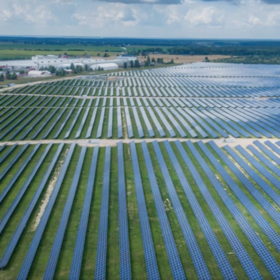Scientists from the United Kingdom have employed a machine-learning (ML) technique to assess whether properties with solar panels are associated with higher sale prices in the British real estate market and have found that PV-equipped houses have a price premium.
“There is a consensus that energy efficiency and being labeled as ‘green’ are valued favorably in the housing market,” said the researchers. “The evidence exclusively focusing on the effect of solar panels, however, remains relatively scarce and concentrates on the US and Australian real estate market. Our focus is on the effect of solar PV systems on sale prices in the UK housing market, for which no prior evidence exists.”
The researchers ran meta-learner algorithms on about 5 million observations and property data of Zoopla, one of the leading providers of UK property listings, and the price paid data (PPD) from the government’s Land Registry from 2012-2018. Equipping the algorithms with keywords such as “PV panel” and “solar,” they categorized listings for houses having or not having solar production. Then, they could match 80% of those listings with real PPD.
“In the sample selection procedure, we exclude properties with more than three bathrooms or more than five bedrooms,” highlighted the group. “Also, as flats in the buildings share the same roof, we drop flats from our sample since flat owners may not be able to install solar panels. Finally, we exclude the properties whose selling prices are at the top and bottom 1% of the price distribution to remove outliers in the data.”
The academics also employed five meta-learner algorithms, namely S-learner, T-learner, X-learner, R-learner, and DR-learner. Meta-learner is an ML technique that combines multiple models – or base learners – to improve predictive performance.
According to the researchers, the S-Learner and T-Learner only utilize base learners and are therefore considered more simplistic. The other three use additional information and are therefore considered to be more sophisticated.
“The average treatment effect calculated using the S-learner algorithm is 0.055, indicating that houses with solar panels command 5.5% selling price premium,” the team stated. “When we use more sophisticated meta-learners, the premiums associated with solar panels increase to more than 6%, ranging between 6.1% with the X-learner to 7.1% with the DR-learner.”
Through further analysis, the researchers were also able to explore differences across years, regions, and price quintiles and identified a declining trend in returns to solar panels over the years. In addition, the highest returns are observed in Wales and Yorkshire and the Humber, followed by the Northwest and Southwest regions.
“The effect of solar panels on house prices is more pronounced in the lowest and highest price quintiles, with the largest premiums observed in the latter,” they said. “The premiums we observe for the lowest price quintile support our argument regarding potential energy savings and the significance of cheaper running costs for buyers with lower incomes. The premiums observed in the high-end of the market may instead reflect the ‘warm glow’ associated with investing in environmentally friendly properties, as well as the ‘green’ signaling and conspicuous conservation effect.”
Finally, to check the robustness of the results, the proposed model was compared to more traditional models, namely the hedonic pricing model and coarsened exact matching (CEM). The first is commonly used to estimate the extent to which each factor affects the market price of the property and the second is utilized in observational data.
The scientists found that the hedonic pricing model showed a premium of 5.6% and CEM of 3.5%. “The results are somehow sensitive to the methods we use,” they highlighted. “Compared to hedonic models, metalearner algorithms are better able to account for issues related to treatment complexity, high dimensionality, the non-linear relationship between property characteristics and house prices and the presence of confounding.”
Their findings were presented in “Returns to solar panels in the housing market: A meta learner approach,” published in Energy Economics. The team included scientists from Swansea University and the University of Birmingham.
This content is protected by copyright and may not be reused. If you want to cooperate with us and would like to reuse some of our content, please contact: editors@pv-magazine.com.








2 comments
By submitting this form you agree to pv magazine using your data for the purposes of publishing your comment.
Your personal data will only be disclosed or otherwise transmitted to third parties for the purposes of spam filtering or if this is necessary for technical maintenance of the website. Any other transfer to third parties will not take place unless this is justified on the basis of applicable data protection regulations or if pv magazine is legally obliged to do so.
You may revoke this consent at any time with effect for the future, in which case your personal data will be deleted immediately. Otherwise, your data will be deleted if pv magazine has processed your request or the purpose of data storage is fulfilled.
Further information on data privacy can be found in our Data Protection Policy.